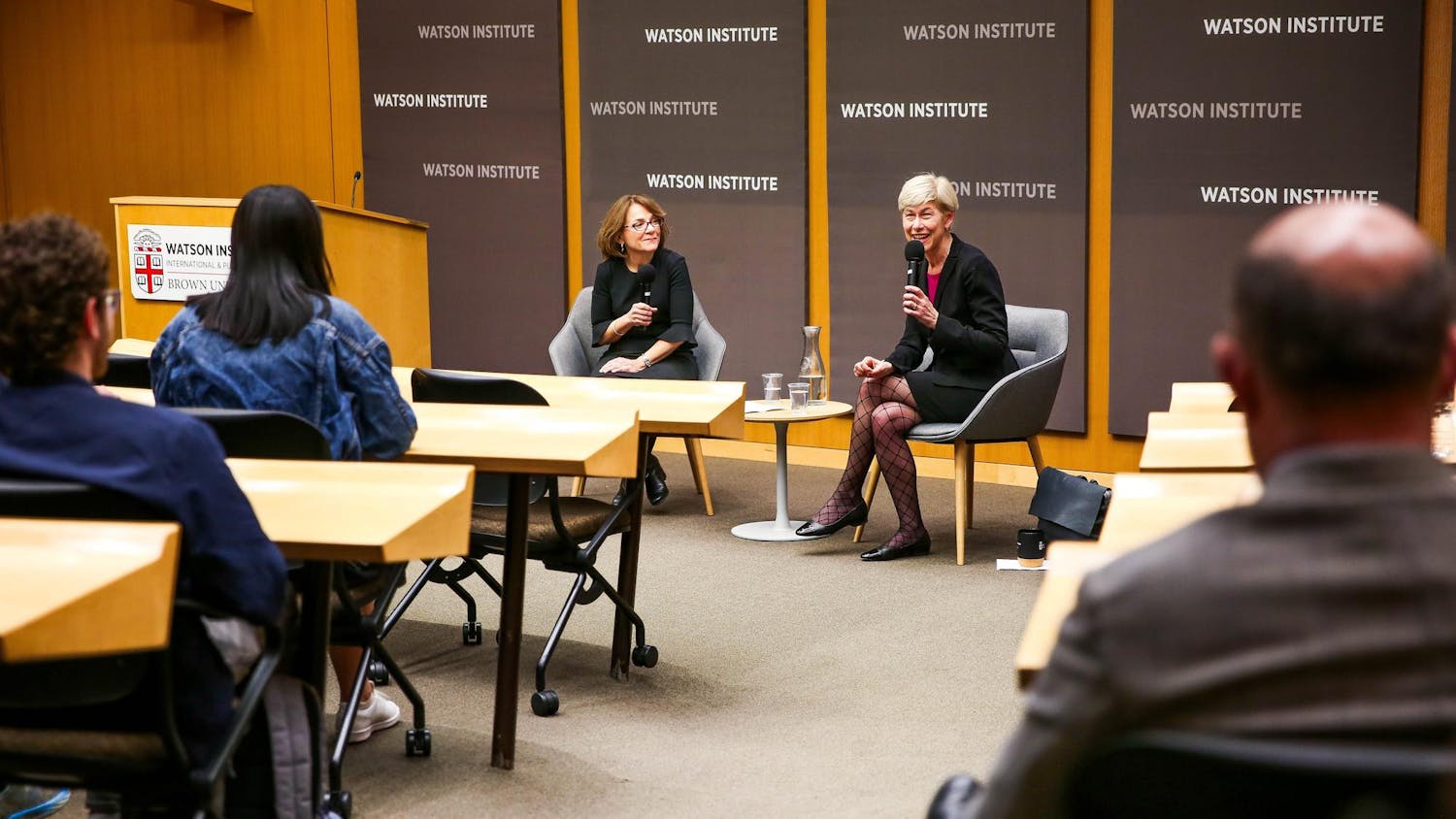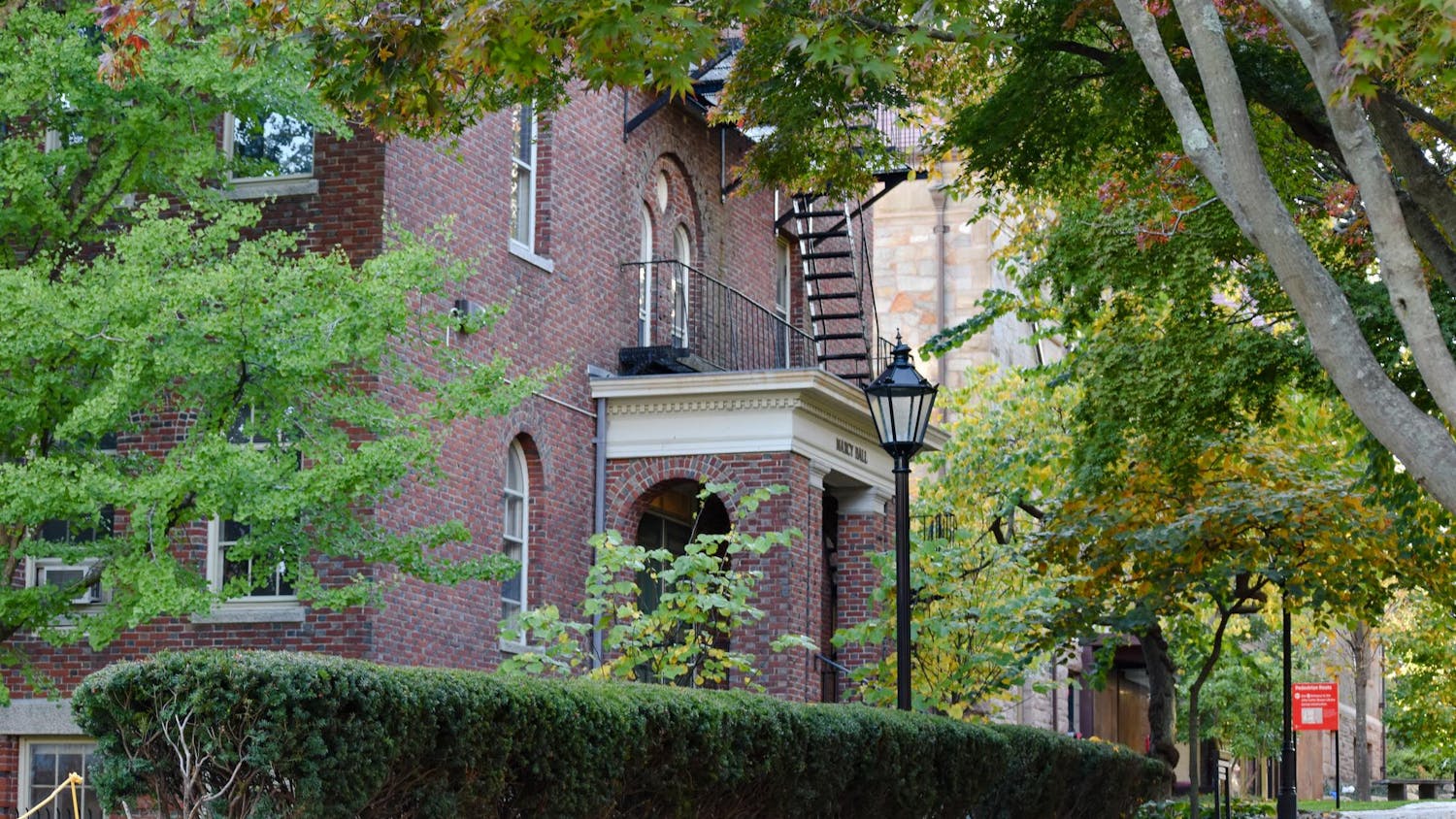As a high school student, Colin MacGregor '14 thought he would eventually push aside his love of art in favor of a career in medicine. That began to change after he participated in summer art programs and worked on more personal art projects in his free time. When it came time to apply to colleges, he realized he wanted to have the traditional undergraduate liberal arts experience without giving up on his passion for art.
He found only one program that fit perfectly with these academic goals — the Brown-RISD dual degree program.
"I've been having a great experience so far in the program," MacGregor said. "My classes are fantastic and the homework is so much fun."
MacGregor is in his first of five years in the program, which is spent learning art foundation at the Rhode Island School of Design. After living at Brown during their second year, students choose how to divide their residency for the remainder of the program, though they must reside for a minimum of two years at each school.
MacGregor is still unsure of what he will concentrate in at either school, but, no matter what, he will graduate with a Bachelor of Arts from Brown and a Bachelor of Fine Arts from RISD.
"Had I not been admitted to the program, I definitely would not be double-majoring in art and some other subject," MacGregor said. "This is a great opportunity for me to do what I love."
The dual degree program is unique to Brown and RISD, said Deputy Dean of the College Stephen Lassonde. While other programs such as Tufts University's dual degree offerings with the New England Conservatory of Music and the School of the Museum of Fine Arts exist, they are "still programs within the universities themselves," said Lassonde, who is Brown's dual degree coordinator. The Brown-RISD degree, on the other hand, is a direct partnership between two very distinct universities, he said.
Only in its second year, the dual degree program consists of 13 students in each class, with numbers not expected to exceed 20 students per class in the foreseeable future, Lassonde said.
"Because it is such a complicated program, it needs to be small so that we can have the careful and committed advising that goes with it. It is very difficult to navigate through each institution," he said.
To ensure that the class size remains small, Lassonde said students are not allowed to transfer into the program. If transfers were accepted, the program could grow beyond its capacity for advising and instruction, which would make it difficult for transfer students to earn their degrees in five years, he added.
"It's a program that was conceived with students in mind who were coming out of high school and knew this was what they wanted to do," he added.
As a high school senior, Stephanie Swart '13 set her sights on art school, thinking she would be content with academic programs focused solely on visual arts. Life as a dual degree student changed her mind.
"Given my high school background, I found that I was not used to doing only art and humanities once I actually got to college. It was frustrating just having entire days working on art my first year here," said Swart, a potential cognitive science concentrator at Brown and a film, animation and video major at RISD. With Brown's science offerings, "I feel like I have more of a balance," she said.
Beth Soucy '13 had the reverse experience. Approaching art more as a hobby, Soucy anticipated pursuing an undergraduate education at a typical liberal arts university, instead of at an art school.
After working on her RISD foundation studies in her first year, Soucy said she found an environment perfect for her academic needs.
"It is just such a great creative atmosphere. Everyone is there creating something alongside everyone else. What you're learning is very public — you learn from and share with everyone else around you," she said.
Part of this learning environment includes what Swart sees as a more competitive climate at RISD than at Brown. "I don't feel like I'm competing with my classmates when I'm here at Brown," she said.
Soucy had a similar view of the two institutions.
"RISD is more about adapting and becoming better. Brown is more an open exchange of ideas to solve problems and come up with new ideas," Soucy said.
These differing academic philosophies are part of the culture shock that comes with moving up College Hill from RISD to Brown.
Caitrin Watson '13, who is a dual degree student and Soucy's roommate in Keeney Quadrangle for their first year on Brown's campus, said she identifies more as a
"Brown person."
"I like being at Brown more than at RISD. In some ways it is harder to be productive here at Brown because work is social. The atmosphere is just different here," Watson said.
"As much as you don't want to stereotype, there is a definite Brown and RISD ‘personality,'" she added.
Though MacGregor does feel disconnected from Brown's campus, he said he is thankful to have made friends during orientation activities. He is a member of the Brown club tennis team and manages to see his Brown friends on the weekends.
"It is harder to go out on weekdays when you have your studio classes," he said. "Some of our Brown friends have come down here to visit us, but you can't go up and see your friends every day."
Administrators who oversee the dual degree program try their best to lessen the culture shock that comes from the campus-to-campus transition, Lassonde said. After complaints from last year's first dual degree class, first-years now participate in both Brown's and RISD's orientation activities.
Students are also assigned faculty advisors at both institutions, and the current first-year dual degree students have peer advisors who entered the program last year.
Though dual degree students may not have as much of an opportunity to embrace the freedom of the open curriculum as their peers, Lassonde said, both dual degree classes are filled with students who know exactly what they want to get out of the program.
"They know that they won't be able to fulfill graduation requirements in the same way," Lassonde said. "They have these great institutions to flow between, which could sometimes seem frustrating in its lack of freedom."
"But that's who these kids are — they are artists who want a large education, and they can get that in this program."
ADVERTISEMENT




